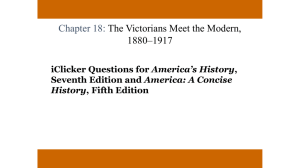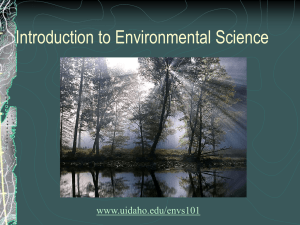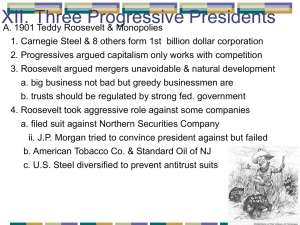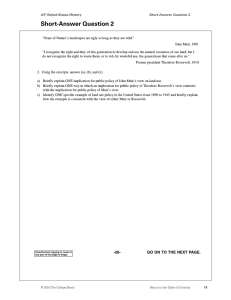Ch 9.3 T. Roosevelt's Square Deal pp. 317
advertisement
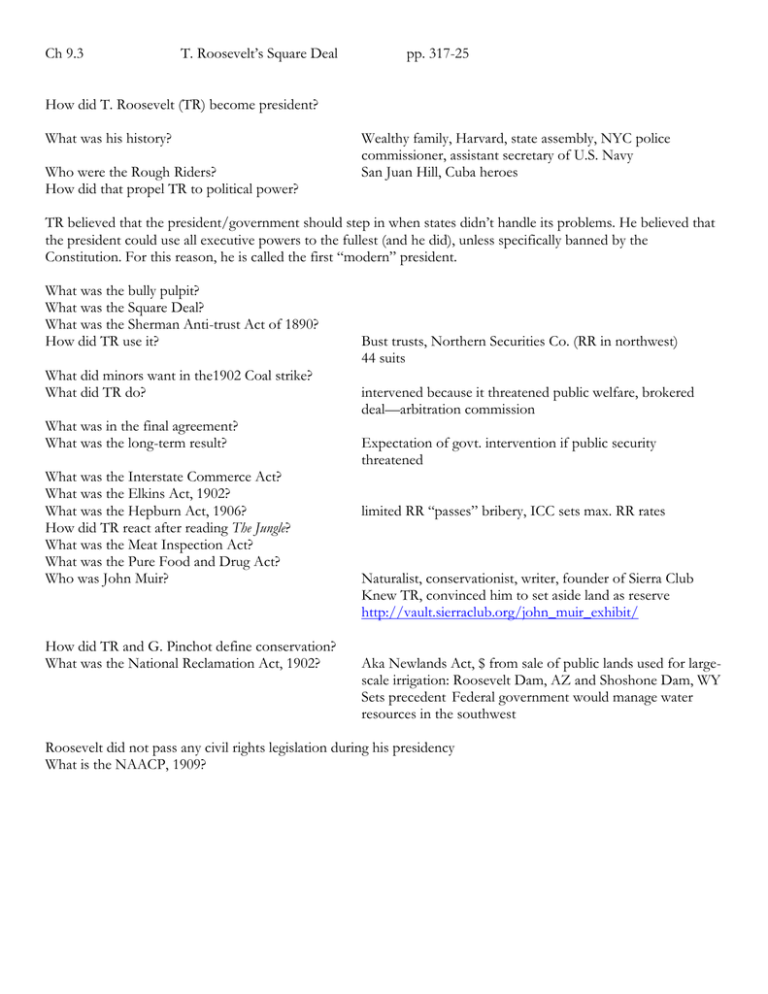
Ch 9.3 T. Roosevelt’s Square Deal pp. 317-25 How did T. Roosevelt (TR) become president? What was his history? Who were the Rough Riders? How did that propel TR to political power? Wealthy family, Harvard, state assembly, NYC police commissioner, assistant secretary of U.S. Navy San Juan Hill, Cuba heroes TR believed that the president/government should step in when states didn’t handle its problems. He believed that the president could use all executive powers to the fullest (and he did), unless specifically banned by the Constitution. For this reason, he is called the first “modern” president. What was the bully pulpit? What was the Square Deal? What was the Sherman Anti-trust Act of 1890? How did TR use it? What did minors want in the1902 Coal strike? What did TR do? What was in the final agreement? What was the long-term result? What was the Interstate Commerce Act? What was the Elkins Act, 1902? What was the Hepburn Act, 1906? How did TR react after reading The Jungle? What was the Meat Inspection Act? What was the Pure Food and Drug Act? Who was John Muir? How did TR and G. Pinchot define conservation? What was the National Reclamation Act, 1902? Bust trusts, Northern Securities Co. (RR in northwest) 44 suits intervened because it threatened public welfare, brokered deal—arbitration commission Expectation of govt. intervention if public security threatened limited RR “passes” bribery, ICC sets max. RR rates Naturalist, conservationist, writer, founder of Sierra Club Knew TR, convinced him to set aside land as reserve http://vault.sierraclub.org/john_muir_exhibit/ Aka Newlands Act, $ from sale of public lands used for largescale irrigation: Roosevelt Dam, AZ and Shoshone Dam, WY Sets precedent Federal government would manage water resources in the southwest Roosevelt did not pass any civil rights legislation during his presidency What is the NAACP, 1909?

